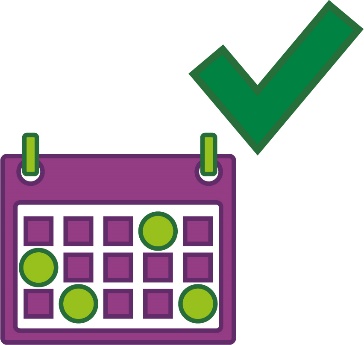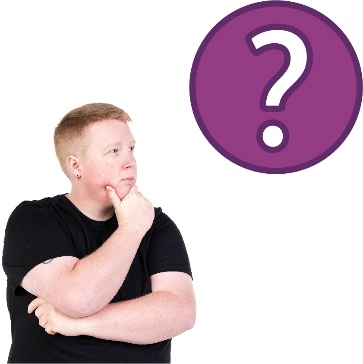After you talk to your worker
| You shouldn’t just talk to your workers:
|
| It’s a good idea to regularly talk with your worker about how things are going. This can fix small problems before they become big problems. |
| You can think about the questions below. |
| When will you check in with your worker? For example, once a week. |
| Do you have any feedback you want to give? For example, because they supported you to look for a new place to live, it was much less stressful. |
| Do you feel comfortable to give feedback to your worker? If not, what makes it hard to do this? |
| Are there ways your worker or service provider can support you to give feedback? For example, by asking you for feedback. |
| Here is an example to show how answering these questions could help you. |
| Rhonda is a person with disability who has a support worker called Nan. | |
| Rhonda noticed that Nan was spending lots of time on her phone. Rhonda didn’t want to upset Nan, so she didn’t tell her service provider straight away. | |
| Rhonda and Nan agreed to talk every 2 weeks about how things are going. They do this over a cup of tea. | |
| At their next talk, Nan explained that her daughter was sick. She used her phone to check that her daughter was okay. | |
| Nan also understood that she had to stop using her phone so much at work. So she asked the childcare centre to call her partner if there was a problem with her child when she was at work. | |
| You can learn more about checking in with your worker on our website. workforcecapability.ndiscommission.gov.au/ framework/level#gen_checkIn_0_0 | |
Writing down what you talked about
| It’s a good idea to write down what you talked about with your worker. You don’t have to write it all down. You only need to write down the main information. | |
This includes: | ||
|
| |
|
| |
|
| |
| Make sure you share what you write down with your:
|
| It means everyone can look back on what you talked about. |
| You should agree about the best way to do this so you can all find what you wrote down. |
For example, you could put the main points in a: | |
|
|
|
|
| You can put everything you talked about into a text message or an email. When you send it, everyone will have a copy. |
| Here is an example of how writing down what you talked about could help you in the future. |
| Sanjay wanted his worker to support him in a different way. |
| So he and his worker found the agreement they wrote together. It talked about:
|
| They talked and created a new agreement about:
|
After you talk to your worker
| You shouldn’t just talk to your workers:
|
| It’s a good idea to regularly talk with your worker about how things are going. This can fix small problems before they become big problems. |
| You can think about the questions below. |
| When will you check in with your worker? For example, once a week. |
| Do you have any feedback you want to give? For example, because they supported you to look for a new place to live, it was much less stressful. |
| Do you feel comfortable to give feedback to your worker? If not, what makes it hard to do this? |
| Are there ways your worker or service provider can support you to give feedback? For example, by asking you for feedback. |
| Here is an example to show how answering these questions could help you. |
| Rhonda is a person with disability who has a support worker called Nan. | |
| Rhonda noticed that Nan was spending lots of time on her phone. Rhonda didn’t want to upset Nan, so she didn’t tell her service provider straight away. | |
| Rhonda and Nan agreed to talk every 2 weeks about how things are going. They do this over a cup of tea. | |
| At their next talk, Nan explained that her daughter was sick. She used her phone to check that her daughter was okay. | |
| Nan also understood that she had to stop using her phone so much at work. So she asked the childcare centre to call her partner if there was a problem with her child when she was at work. | |
| You can learn more about checking in with your worker on our website. workforcecapability.ndiscommission.gov.au/ framework/level#gen_checkIn_0_0 | |
Writing down what you talked about
| It’s a good idea to write down what you talked about with your worker. You don’t have to write it all down. You only need to write down the main information. | |
This includes: | ||
|
| |
|
| |
|
| |
| Make sure you share what you write down with your:
|
| It means everyone can look back on what you talked about. |
| You should agree about the best way to do this so you can all find what you wrote down. |
For example, you could put the main points in a: | |
|
|
|
|
| You can put everything you talked about into a text message or an email. When you send it, everyone will have a copy. |
| Here is an example of how writing down what you talked about could help you in the future. |
| Sanjay wanted his worker to support him in a different way. |
| So he and his worker found the agreement they wrote together. It talked about:
|
| They talked and created a new agreement about:
|



























